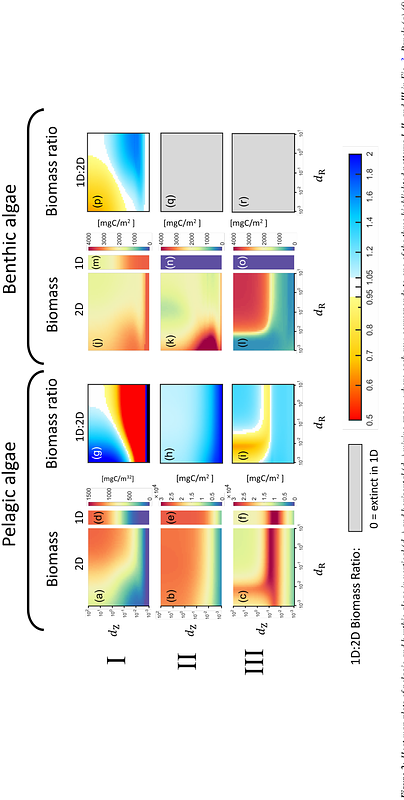Can whole-lake algal biomass be captured by one-dimensional modeling approaches? An exploration using 'Lake2D'

Can whole-lake algal biomass be captured by one-dimensional modeling approaches? An exploration using 'Lake2D'
Harlin, H.; Larsson, K.; Diehl, S.
AbstractBasin morphometry can strongly affect lake-internal processes relevant for productivity, such as turbulent mixing, photosynthetic energy acquisition, sedimentation, and nutrient recycling. Yet, in both empirical and theoretical studies of whole-lake primary production, lake morphometry is often simplified to a single 1-dimensional measure - lake mean depth. Using the conceptual, process-based model \'Lake2D\', we addressed the question: To what extent can pelagic and benthic producer dynamics, integrated over a lake basin, be captured by approaches that use mean depth as the only morphometrical variable? We created two models of algal biomass dynamics in a radially symmetric, cone-shaped lake - one preserving the lake\'s vertical and radial dimensions and one preserving only the lake\'s mean depth - and compared model predictions of algal biomass dynamics across a wide range of lake sizes, mixing conditions, water transparency, and nutrient content. Our analyses reveal that model predictions differ substantially but predictably in much of the investigated parameter space, and identifies the light environment set by lake depth, water clarity and pelagic nutrients, but also lake area, as main drivers of the differences. Most commonly, the model based on mean depth underestimates benthic algal biomass and overestimates pelagic algal biomass, the net effect on total biomass being a 5-50% underestimate in shallow lakes and a 5-20% overestimate in many deeper lakes. Since gross primary production (GPP) in our model scales with algal biomass, we believe that global estimates of lake GPP should be corrected for the systematic errors inflicted by the prevailing 1-dimensional approaches.